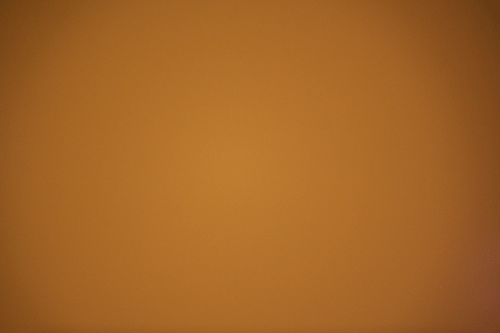

To the right is an image of the sky taken through the 8" Classic, with a white transparent mask over the front of the corrector plate. This is a 300s exposure taken at ISO800. The vignetting is obvious, as is the sodium light pollution......I use masks like this to correct my photos, although it is not entirely satisfactory. A darker sky would be much better.

However, this was the first time that I observed the Horse Head which I found exciting, I was not even sure I had got it in the field of view when I started this sequence of exposures. To observe the Horse Head was the goal of this exposure so from that point it was a success.
As a side note, I have also had bad reflections in the past when using an off axis guider. These have come from bright stars caught on the edge of the prism, so you have to exercise care with these also. You can not always see the reflections in a single image, they can "appear" as you sum multiple images.
